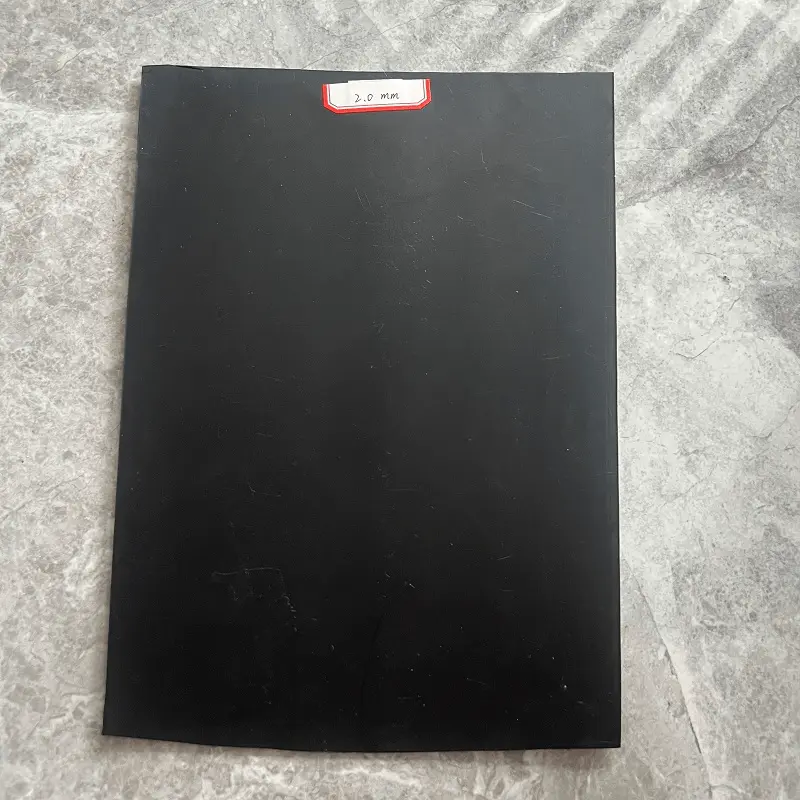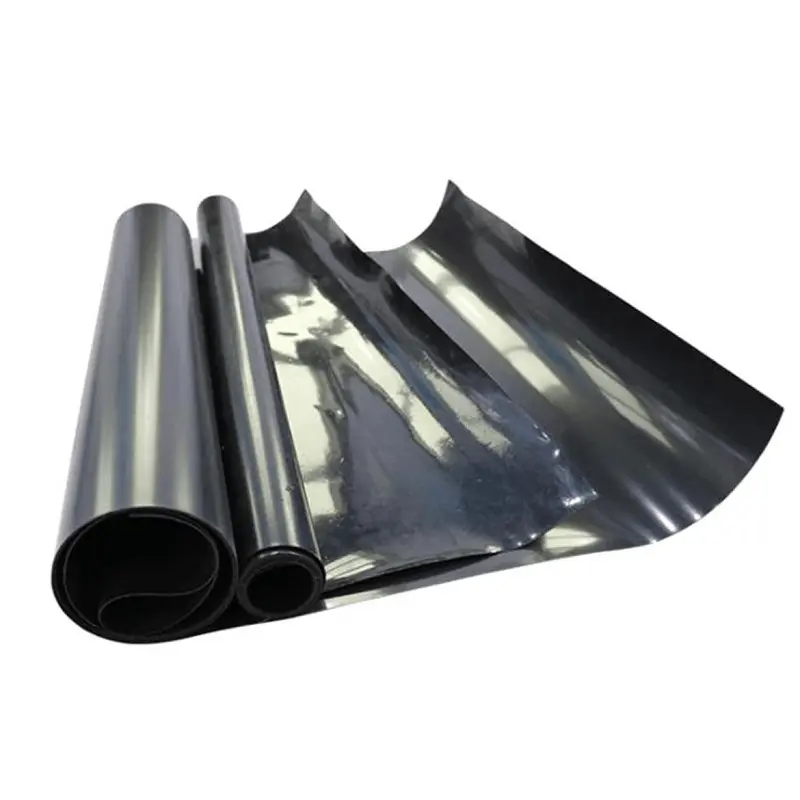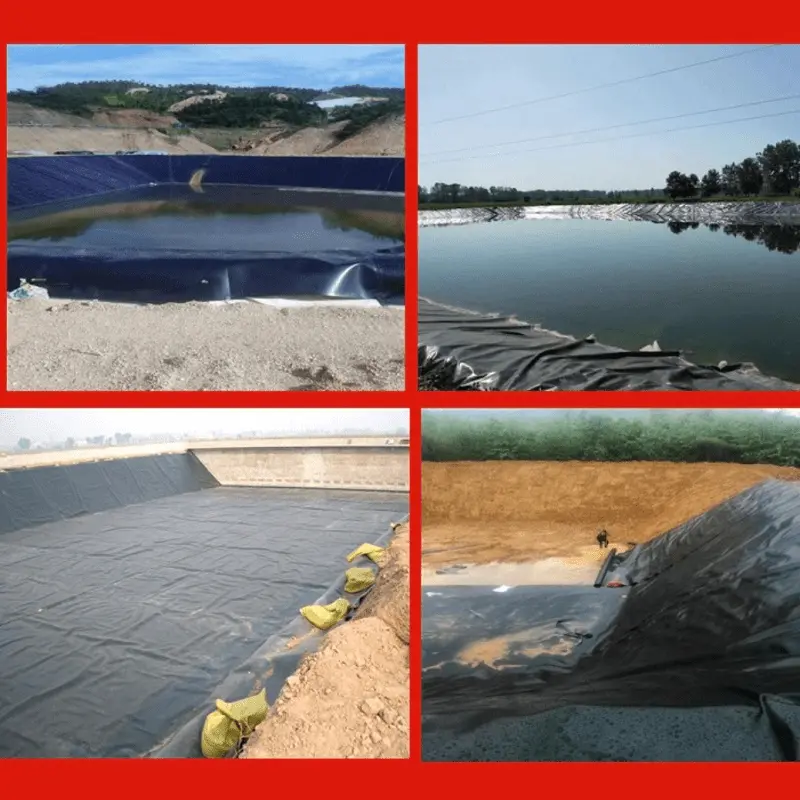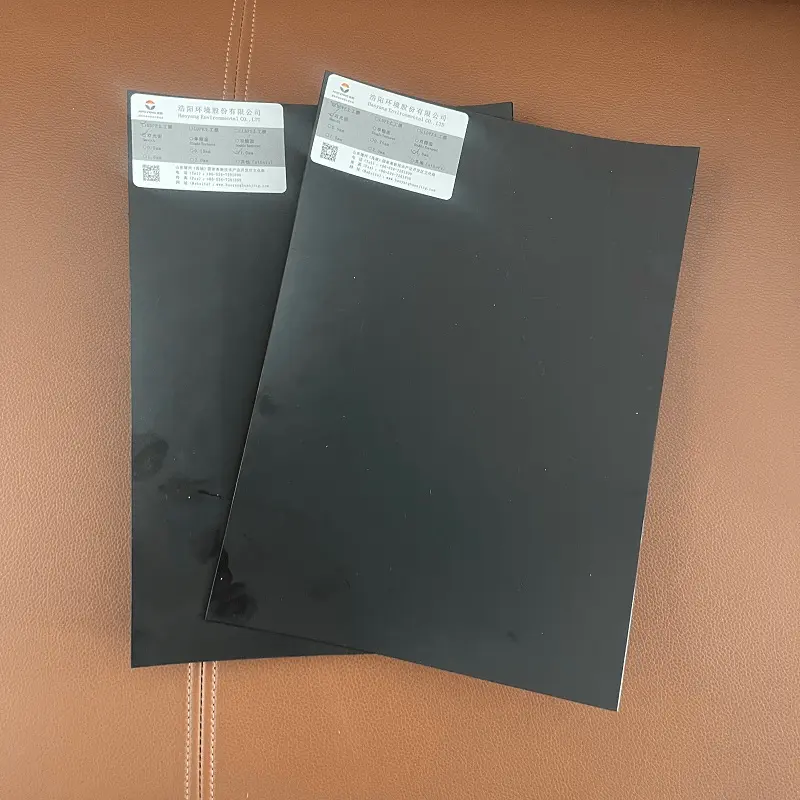1. Overview of HDPE Geomembrane
HDPE geomembrane is a synthetic membrane made from high-density polyethylene plastic. It is widely used in civil engineering applications, including lining canals, reservoirs, and agricultural land to prevent water leakage and soil contamination. In agriculture, HDPE geomembrane serves as an effective irrigation and soil conservation tool, enhancing water use efficiency and crop yields.

2. Benefits of HDPE Geomembrane in Ghanaian Agriculture
2.1 Water Conservation and Efficiency
Ghana's agriculture sector is heavily reliant on rainfall, with irrigation accounting for a significant portion of water use. HDPE geomembrane helps conserve water by creating an impermeable barrier that reduces evaporation and seepage from irrigation canals and reservoirs. This leads to more efficient water use, ensuring that precious water resources are utilized optimally.
Data Table 1: Water Conservation Benefits of HDPE Geomembrane
| Benefit | Percentage Improvement |
|---|---|
| Reduction in Evaporation | 25-35% |
| Reduction in Seepage | 30-40% |
| Overall Water Efficiency | 20-30% |

2.2 Soil Protection and Fertility
Soil erosion and degradation are major challenges in Ghanaian agriculture. HDPE geomembrane helps protect soil by preventing water runoff, which carries away topsoil and nutrients. Additionally, it maintains soil moisture levels, promoting healthier plant growth and reducing the need for excessive irrigation. This leads to improved soil fertility and sustained agricultural productivity.
Data Table 2: Soil Protection Benefits of HDPE Geomembrane
| Benefit | Percentage Improvement |
|---|---|
| Reduction in Soil Erosion | 20-25% |
| Improved Soil Moisture | 15-20% |
| Enhanced Soil Fertility | 10-15% |
2.3 Chemical Use Reduction
The use of pesticides and fertilizers is common in Ghanaian agriculture to control pests and enhance crop growth. However, excessive use can lead to contamination of soil and water resources. HDPE geomembrane acts as a barrier, reducing the leaching of chemicals into the soil and groundwater. This not only protects the environment but also ensures that chemicals are used more effectively, lowering overall costs.
Data Table 3: Chemical Use Reduction Benefits of HDPE Geomembrane
| Benefit | Percentage Reduction |
|---|---|
| Reduction in Pesticide Use | 15-20% |
| Reduction in Fertilizer Use | 10-15% |
| Lower Chemical Contamination | 25-30% |

3. Challenges in Adopting HDPE Geomembrane
Despite its numerous benefits, the adoption of HDPE geomembrane in Ghanaian agriculture faces several challenges.
3.1 High Initial Cost
The installation of HDPE geomembrane requires significant upfront investment, which can be a barrier for small-scale farmers with limited resources. Government subsidies and financial incentives can help mitigate this challenge, encouraging wider adoption.
3.2 Technical Expertise
The proper installation and maintenance of HDPE geomembrane require technical expertise. Farmers need training and support to ensure that the material is used effectively and efficiently. Public-private partnerships and extension services can play a crucial role in providing this technical support.
3.3 Waste Management
The disposal of HDPE geomembrane at the end of its lifespan is a concern. Improper disposal can lead to environmental pollution. Establishing recycling programs and promoting the use of biodegradable alternatives are potential solutions to this challenge.

4. Case Studies
4.1 Irrigation Canal Lining in the Volta Region
In the Volta Region of Ghana, HDPE geomembrane has been used to line irrigation canals. This has significantly reduced water leakage and evaporation, improving water delivery efficiency by over 30%. Farmers in the area have reported increased crop yields and reduced irrigation costs.
4.2 Reservoir Lining in the Ashanti Region
Reservoirs in the Ashanti Region have been lined with HDPE geomembrane to prevent seepage and maintain water levels during dry seasons. This has ensured a reliable water supply for irrigation, supporting agricultural productivity and food security in the region.
5. Policy and Regulatory Framework
To facilitate the widespread adoption of HDPE geomembrane in Ghanaian agriculture, a robust policy and regulatory framework is necessary. This includes:
Subsidies and Incentives: Government subsidies and tax incentives can lower the initial cost of adoption for farmers.
Technical Training: Public and private sector initiatives should provide training and technical support to farmers.
Recycling Programs: Establishing recycling programs for HDPE geomembrane waste can address environmental concerns.
Quality Standards: Implementing quality standards for HDPE geomembrane products can ensure their effectiveness and durability.
6. Future Prospects
The future of HDPE geomembrane in Ghanaian agriculture looks promising. With advancements in technology and increasing awareness of its benefits, more farmers are expected to adopt this practice. Additionally, research into biodegradable alternatives and improved recycling methods will address environmental concerns, ensuring sustainable use.
Conclusion
HDPE geomembrane offers significant benefits for Ghanaian agriculture, including water conservation, soil protection, and reduced chemical use. However, challenges such as high initial cost, technical expertise, and waste management need to be addressed through policy and regulatory frameworks, technical training, and recycling programs. As Ghana continues to prioritize agricultural development and food security, the strategic use of HDPE geomembrane can play a crucial role in achieving these goals.
![]() 1.5 Double-sided smooth HDPE geomembrane.pdf
1.5 Double-sided smooth HDPE geomembrane.pdf

897.webp)
942.webp)
237.webp)